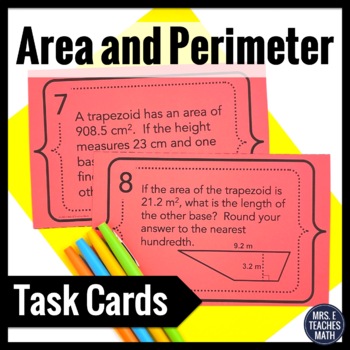Today I'm linking up with Scaffolded Math and Science to share math misconceptions and how we fix them!
When teaching geometry, I (wrongly!) assume that students remember what they have previously learned. I know that students learn how to find the area of parallelograms and triangles in middle school, so I assume that I don’t need to teach it in as much depth.
WRONG!
In this example, students will often make one of two common mistakes. Either they use 15 as the base and get frustrated that they can’t find the height or they try to use 10 and 8 as the base and height.
However, I have to constantly remind my students that the base and the height are always perpendicular to each other. To solve this problem, I have them mark the perpendicular parts with a highlighter and circle the right angle marking.
Marking diagrams with a highlighter is also helpful for me to quickly find where students make mistakes. In this example, there are two ways students could solve the problem. When they mark the diagram, I can see if they are having trouble finding the base and height or if they just made an arithmetic error.
This problem is tricky for students because they want to use 20 and 30 as the base and height. Since a parallelogram is “kind of like a rectangle” in the student’s mind, they think it is ok. However, when a perpendicular line is drawn, they can see that 30 cannot be used. This problem is actually trickier than it first appears!
I like using this technique because they can even use it on standardized tests. Tests don’t allow highlighters, but students can draw on their booklet darkly with their pencil.
The examples in this post are from my Area of Rectangles, Parallelograms, and Triangles Lesson and my Area and Perimeter Task Cards.
Check out tips for below for other math misconceptions!
The examples in this post are from my Area of Rectangles, Parallelograms, and Triangles Lesson and my Area and Perimeter Task Cards.
Check out tips for below for other math misconceptions!









